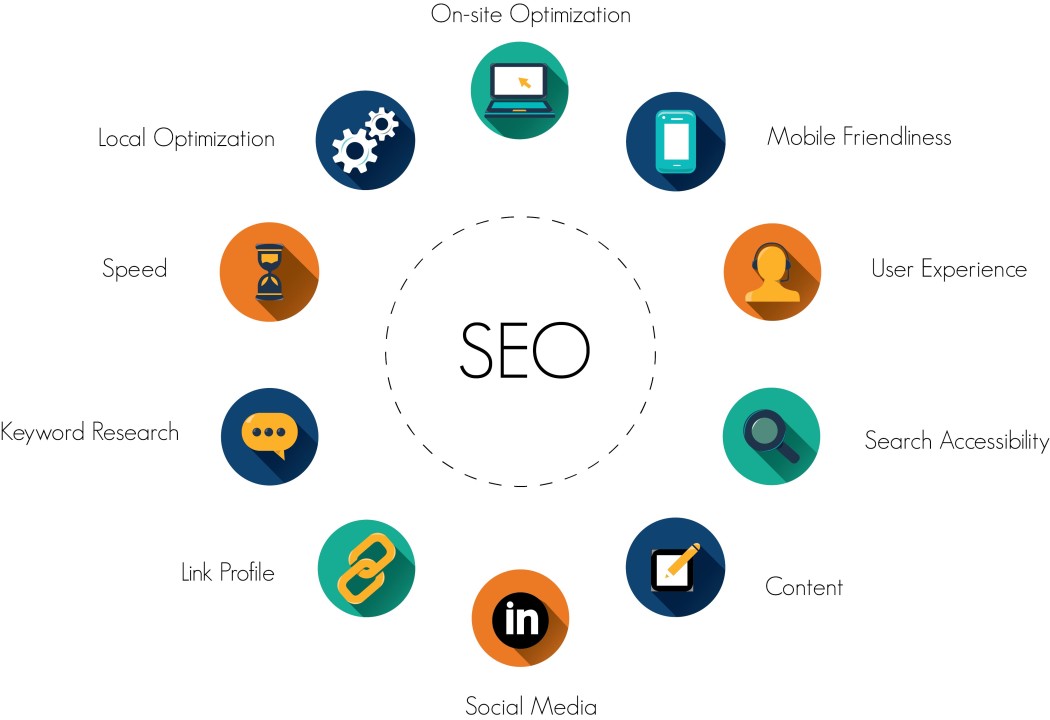Discover the secret beauty business boom: Unleash untapped potential with our game-changing SEO strategies. Are you ready?

Image courtesy of Pixabay via Pexels
Table of Contents
- Understanding the Importance of Online Marketing
- Mastering Search Engine Optimization for Beauty Businesses
- Harnessing the Power of Paid Marketing
- Crafting Engaging and Informative Blog Posts for Beauty Businesses
- Leveraging Social Media for Beauty Businesses
- Nurturing Customer Loyalty through Email Marketing
Welcome to our comprehensive guide on optimizing marketing strategies for the beauty industry! From hair salons to nail salons, makeup artists to brow bars, we’ve got you covered with valuable tips and tricks to help boost your business’s online presence and reach more potential customers. In this blog post, we’ll dive into various marketing techniques, including SEO, paid advertising, and effective blogging practices that can drive traffic and nurture customer loyalty. Get ready to take your beauty business to new heights!
Understanding the Importance of Online Marketing
Why it’s crucial to have an effective online marketing strategy in the beauty industry
Advantages of digital marketing over traditional marketing methods
Identifying your target audience to tailor your marketing efforts
Mastering Search Engine Optimization for Beauty Businesses
Conducting keyword research to identify relevant search terms
Optimizing your website’s on-page elements (title tags, meta descriptions, etc.) for improved visibility
Creating high-quality content that engages readers and search engines
Search Engine Optimization (SEO) is one of the most powerful tools available to beauty businesses in today’s digital landscape. By implementing effective SEO strategies, you can significantly increase your online visibility and attract a steady flow of potential customers. Let’s dive into some key aspects of SEO that can help boost your beauty business:
Conducting thorough keyword research is the first step in optimizing your website and content for search engines. Identify the popular search terms related to your beauty business, such as “hair salon,” “makeup artist,” or “nail salon.” Utilize keyword research tools to find commonly searched phrases in the beauty industry and incorporate them strategically into your website’s content. This will help your website rank higher in search engine results pages (SERPs) when potential customers search for beauty services in your area.
In addition to keyword optimization, optimizing your website’s on-page elements is crucial for better visibility. Make sure your page titles, meta descriptions, and headers include relevant keywords. These elements provide search engines with vital information about your website and help them understand the context of your content. A well-optimized website sends positive signals to search engines, ultimately improving your ranking and visibility in search results.
Creating high-quality and engaging content is a vital aspect of SEO. Develop informative and valuable content that addresses common beauty concerns, provides tips and tricks, or showcases your expertise. Regularly update your blog with fresh content to keep your website relevant in the eyes of both search engines and potential customers. Remember to incorporate relevant keywords naturally into your content, but avoid keyword stuffing, as it can negatively impact your SEO efforts.
Harnessing the Power of Paid Marketing
Overview of different paid advertising platforms suitable for the beauty industry (Google Ads, social media ads, etc.)

Image courtesy of www.linkedin.com via Google Images
Setting up effective ad campaigns and targeting options
Measuring and analyzing the success of your paid marketing efforts
While SEO is a cost-effective way to improve your online visibility, paid marketing can provide immediate results and complement your organic growth strategies. The beauty industry offers various paid advertising platforms that can help expand your reach and drive targeted traffic to your website. Here are some key considerations for harnessing the power of paid marketing:
Google Ads is an excellent platform for beauty businesses to target potential customers actively searching for beauty services in their area. With Google Ads, you can create text-based ads that appear at the top of search results when users enter relevant keywords. It is essential to identify specific keywords that potential customers are likely to use when searching for your services. Craft compelling ad copy that highlights your unique selling points, and pay attention to your targeting options to reach the right audience.
Social media platforms, such as Facebook and Instagram, offer highly targeted advertising options that allow you to showcase your beauty services to specific demographics. Take advantage of advanced targeting features to reach potential customers based on location, age, gender, and interests. Use visually appealing and engaging ad formats, such as image carousels, videos, or before-and-after transformations, to capture the attention of your target audience.
Measuring and analyzing the success of your paid marketing efforts is crucial to optimizing your campaigns. Track key metrics, such as click-through rates, conversion rates, and return on investment (ROI), to gauge the effectiveness of your ads. Use A/B testing to experiment with different ad variations and landing pages to identify the most successful combinations. With proper tracking and analysis, you can refine your paid marketing strategies and allocate your budget effectively.
Crafting Engaging and Informative Blog Posts for Beauty Businesses
The importance of blogging for content marketing and driving traffic to your website
Identifying popular blog topics for the beauty industry
Tips for writing compelling and valuable blog posts that resonate with your target audience
Blogging is a powerful tool for beauty businesses to showcase their expertise, connect with their target audience, and drive traffic to their websites. By creating engaging and informative blog posts, you can position yourself as an authority in the beauty industry and nurture customer loyalty. Let’s explore how you can craft compelling blog posts:
Content marketing through blogging helps you establish a strong online presence and attract potential customers. Regularly publishing blog posts that address common beauty concerns, provide tips and tricks, or share industry insights can help drive organic traffic to your website. Engage your audience by sharing your expertise and offering valuable information that they can benefit from. By consistently providing valuable content, you can build trust and loyalty with your readers, ultimately driving conversions.
Identifying popular blog topics for the beauty industry is key to capturing your audience’s interest. Conduct market research and stay up-to-date with beauty trends and customer preferences. Consider topics such as “The Latest Haircut Trends,” “Skincare Tips for Radiant Skin,” or “Makeup Looks for Special Occasions.” Tailor your blog posts to address the pain points and interests of your target audience, providing them with the information they are actively seeking.
When writing blog posts, focus on creating compelling and valuable content that resonates with your target audience. Use engaging headlines and introductions to capture readers’ attention from the start. Break your content into smaller sections or bullet points to make it more scannable and easier to read. Incorporate relevant images or videos to enhance visual appeal and provide step-by-step tutorials or before-and-after transformations for a more immersive experience. Encourage interaction by ending each blog post with a call-to-action, such as inviting readers to share their thoughts or tips in the comments section.
Leveraging Social Media for Beauty Businesses
Choosing the right social media platforms to promote your beauty business

Image courtesy of www.linkedin.com via Google Images
Creating engaging content on various platforms (Instagram, Facebook, YouTube, etc.)
Utilizing influencer marketing to expand your reach
Social media platforms have become indispensable marketing tools for beauty businesses. Leveraging the power of social media can provide valuable exposure, engage with your target audience, and foster brand loyalty. Here are some key considerations to make the most out of your social media presence:
Choosing the right social media platforms for your beauty business is crucial to reaching your target audience effectively. Identify the platforms where your potential customers spend the most time and tailor your presence accordingly. Instagram is particularly popular in the beauty industry due to its visual nature and highly engaged user base. Facebook is another versatile platform that allows you to connect with potential customers through targeted ads, engaging posts, and informative videos. If you specialize in tutorials or educational content, YouTube can be an excellent platform to showcase your expertise and reach a broader audience.
Creating engaging content is key to building a strong following on social media. Showcase your beauty services through captivating visuals, before-and-after transformations, and informative videos. Experiment with different formats, such as carousel posts, videos, or user-generated content, to keep your audience engaged. Regularly interact with your followers by responding to comments and messages. This will help foster a sense of community and strengthen customer loyalty.
Influencer marketing can be a powerful way to expand your reach and gain exposure within your target demographic. Collaborate with influencers in the beauty industry who have a significant following and align with your brand’s values. By partnering with influencers, you can leverage their influence and trust with their audience to promote your products or services. Remember to choose influencers whose audience aligns with your target market and collaborate on authentic and genuine content that resonates with their followers.
Nurturing Customer Loyalty through Email Marketing
Building a strong email list of loyal customers and potential leads
Crafting effective email campaigns that provide value and drive conversions
Automating your email marketing to save time and increase efficiency
Email marketing is a powerful tool for nurturing customer loyalty, generating repeat business, and driving conversions. By building a strong email list and crafting persuasive campaigns, you can keep your audience engaged, build trust, and foster customer loyalty. Here’s how you can make the most out of email marketing:
Building an email list is the first step in successful email marketing. Encourage visitors to your website to subscribe to your newsletter or offer exclusive incentives for signing up. Ensure that the sign-up process is seamless and straightforward. Segment your email list based on demographics, purchase history, or engagement level to deliver targeted and personalized content that resonates with your subscribers.
Crafting effective email campaigns involves delivering valuable content that provides value to your subscribers. Tailor your emails to address your audience’s pain points, offer exclusive promotions, or share informative beauty tips. Use engaging subject lines to capture attention and entice recipients to open your emails. Incorporate visually appealing images or videos to enhance the overall experience. Remember to include clear call-to-action buttons that drive recipients to take the desired action, such as booking an appointment or purchasing your products.
Email marketing automation can save you time and increase efficiency. Set up automated email sequences that trigger based on specific actions or events, such as a welcome series for new subscribers or follow-up emails after a customer’s purchase. Automated emails can help you nurture leads, segment your audience further, and deliver timely and relevant content without manual intervention. Regularly monitor the performance of your email campaigns, analyze open rates, click-through rates, and conversion rates to refine your strategies and improve results.
In conclusion, implementing effective marketing strategies is crucial for success in the competitive beauty industry. By mastering SEO techniques, harnessing the power of paid marketing, creating engaging blog posts, leveraging social media platforms, and nurturing customer loyalty through email marketing, you can elevate your beauty business and attract a steady flow of new customers. Remember, consistency, adaptability, and providing unique value to your target audience are key to standing out in the beauty industry’s online landscape. Get ready to witness the growth and success of your beauty business like never before!